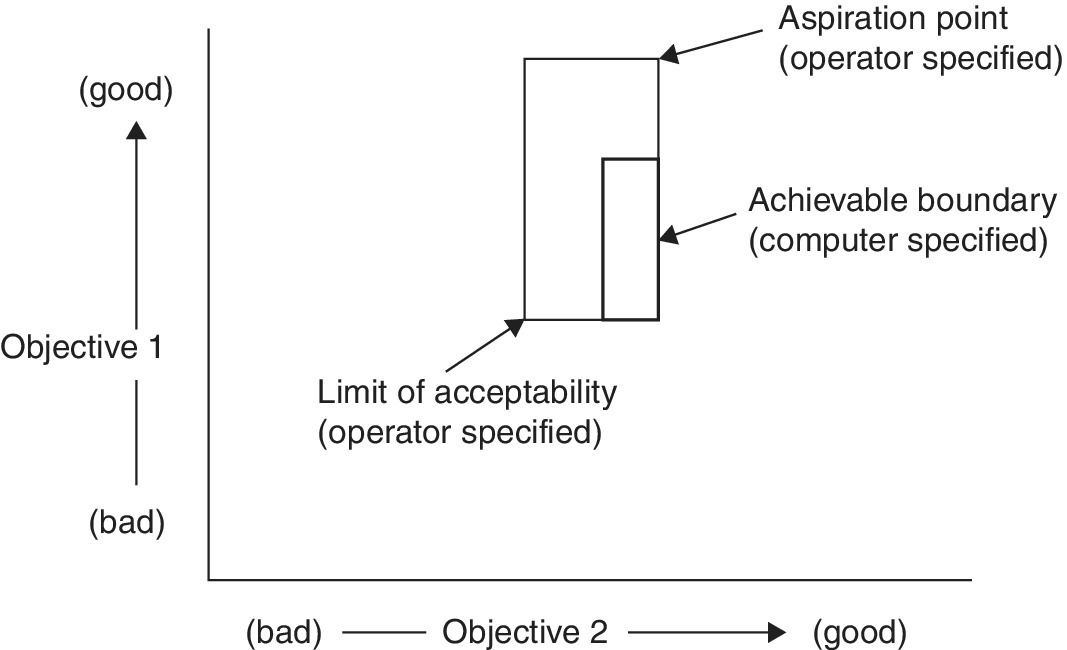7 DECIDING ON ACTION
WHAT IS ACHIEVABLE
It may be useful to render a problem space in some form of graphical representation that allows the decision maker to visualize in multiple dimensions (of the salient variables of the problem) what is achievable within the problem space of what is ideal and what is acceptable. Some solutions may be achievable, given available resources (time, energy, money, etc.) but not be desirable, while some may be acceptable but not achievable. If there were only two dimensions to the problem space, this would create a rectangle (as shown in Figure 7.1). The larger rectangle is defined by what is desirable and what is acceptable, based on inputs by the human decision maker. Points within this space can be evaluated as to achievability by a computer armed with relevant physical laws, economic, or legal constraints that simultaneously determine the smaller rectangle.

FIGURE 7.1 Example of determining the space of what is achievable within the space defined by what is aspired to and what is acceptable (in a simple two‐dimensional problem space).
In general, problems (designs, policies) are constituted by a much larger set of variables N, and so these nested spaces must be represented in N dimensions, impossible to visualize in a flat rendering. A computer, of course, has no practical limitation on the size of the problem space, so any graphical ...
Get Modeling Human–System Interaction now with the O’Reilly learning platform.
O’Reilly members experience books, live events, courses curated by job role, and more from O’Reilly and nearly 200 top publishers.

